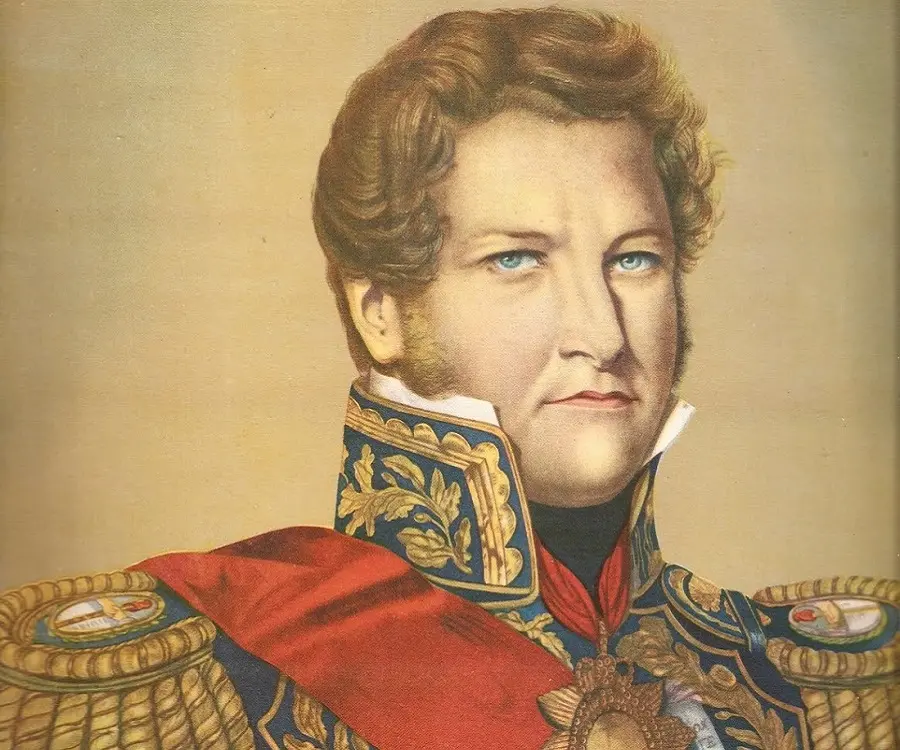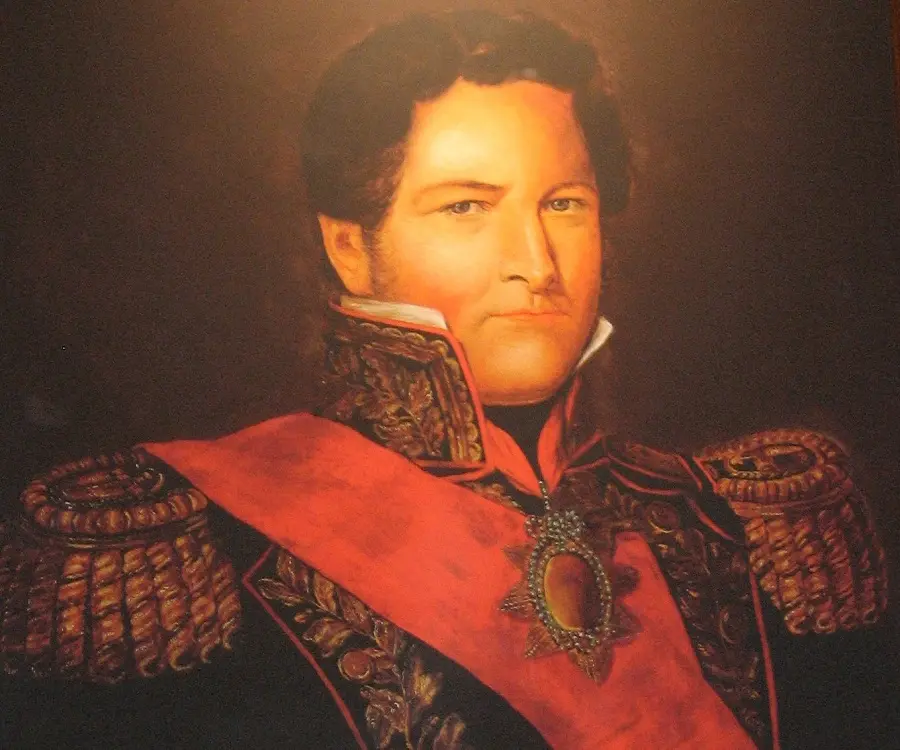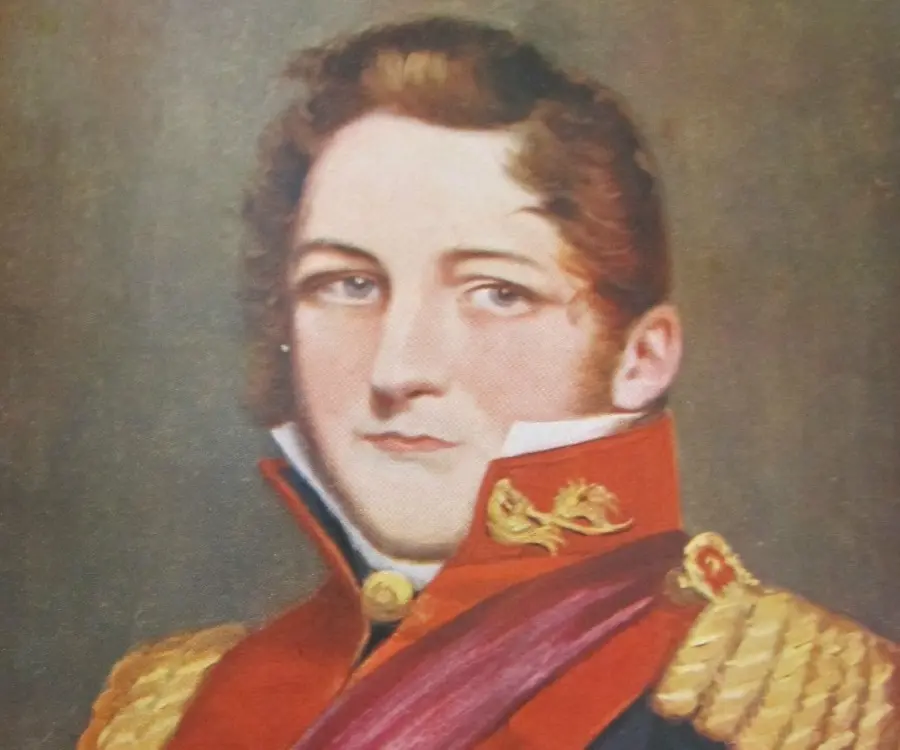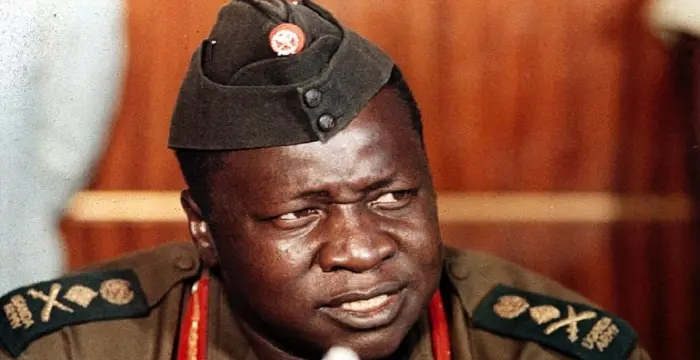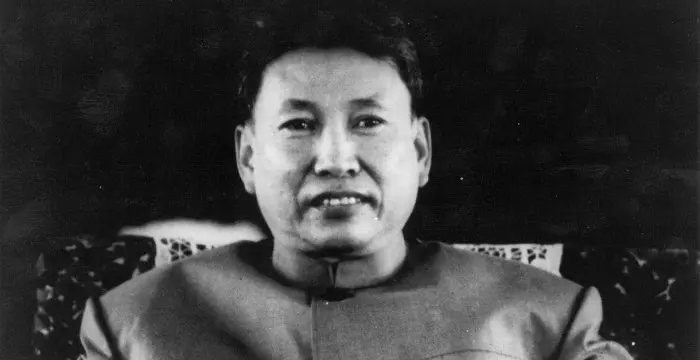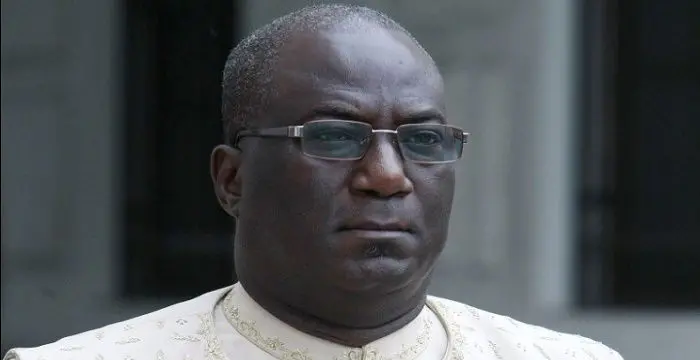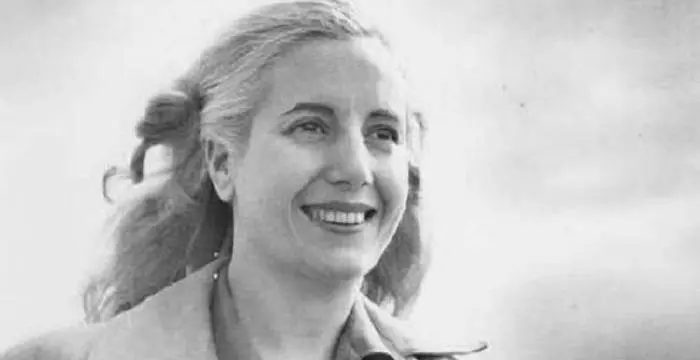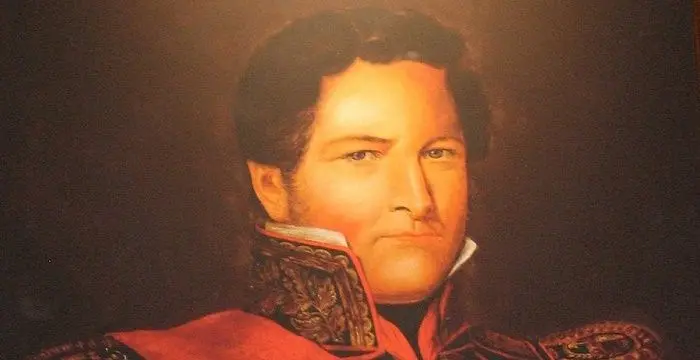
Juan Manuel de Rosas - Dictator of Argentina, Birthday and Personal Life
Juan Manuel de Rosas's Personal Details
Juan Manuel José Domingo Ortiz de Rosas was an Argentinean dictator
| Information | Detail |
|---|---|
| Birthday | March 30, 1793 |
| Died on | March 14, 1877 |
| Nationality | Argentinian |
| Famous | Leaders, Dictators, Dictator of Argentina |
| Spouses | Encarnación Ezcurra |
| Birth Place | Buenos Aires |
| Political Ideology | Unitarian Party, Federal Party |
| Religion | Catholicism |
| Gender | Male |
| Sun Sign | Aries |
| Born in | Buenos Aires |
| Famous as | Dictator of Argentina |
| Died at Age | 83 |
Juan Manuel de Rosas's photo
Who is Juan Manuel de Rosas?
Juan Manuel José Domingo Ortiz de Rosas was an Argentinean dictator, who ruled over Buenos Aires Province and Argentine Confederation in the first half of the nineteenth century. Although he had been nicknamed as the Restorer of the Law he was actually a ruthless autocrat, who did not tolerate opposition. Under him, election became a travesty and judiciary became a passive instrument of his dictatorship. Executions were often carried out just to make an example and to terrorize the common people into submission. Indeed, he hardly targeted the lowly; it were the well-known people who came under the line of his fire. However, it does not mean that he did not love his country. It was only that he tried to do everything in his way. For example, he believed that Argentina, with its vast percentage of illiterates, was not yet ready for democracy and for the good of country elections had to be manipulated. However, he could not hold his reign for long and was forced to flee in the middle of the century. He spent his last days farming his land in United Kingdom.
// Famous Dictators
Idi Amin
A Ugandan dictator, Idi Amin is remembered for his brutal regime and crime against humanity. Check this biography to know in details about his life, childhood, profile and timeline.
Pol Pot
Pol Pot was the Cambodian revolutionary who led the Khmer Rouge. This biography provides a glimpse of his childhood, career, profile and timeline.
Siaka Stevens
Siaka Stevens was the third Prime Minister of Sierra Leone who later became the first President of the country. This biography of Siaka Stevens provides detailed information about his childhood, life, achievements, works & timeline.
Childhood & Early Life
Juan Manuel de Rosas was born on March 30, 1793 in Buenos Aires. His father León Ortiz de Rosas was a military officer; he also owned large tract of land. His mother Agustina López de Osornio was a strong willed woman from a wealthy family.
Juan, who was the eldest of the couple’s twelve children, was greatly influenced by his mother. In the beginning, he was educated at home. At the age of eight, he was enrolled at a private school. However, he was not a very studious boy; but he did take interest in French absolutism.
In 1806, British force sinvaded Argentina to take control of the basin of the Rio de Plata (River Plate) and occupied Buenos Aires for forty six days. At that time Juan was thirteen years old. Too young to take direct part in the battle, Juan took the job of distributing ammunitions to the soldiers.
Although the British were defeated in this war they again attacked in 1807. This time, Juan was assigned to the Caballería de los Migueletes; however, there was no record of his taking active duty. This time too, the British were repelled.
After the war, the Rosas family, who had hitherto been living at Buenos Aires, shifted to their ranch. Here he mixed freely with the ‘gauchos’ who worked in their estancia and often dressed like them; but he never let them forget that he was their boss.
In 1811, Juan took charge of the family’s ranch and within two years, he married Encarnación Ezcurra. May be because his family did not approve of this liaison, he decided to start a business.
As Landowner
Juan Manual de Rosa first opened a meat salting plant called Los Cerrillos. His organizational skills as well as use of non traditional approach in labor management resulted in early success. He next began to acquire land and very soon became a landowner in his own right.
By now, Argentine War of Independence had begun and in July 1816, all ties with Spain were severed. However, a unified Argentina was still a far cry. A civil war broke out between the Province of Buenos Aires and the rest over provincial autonomy. It was actually a struggle between the Unitarians and Federalists.
In 1820, Rosas along with his gauchos enlisted in the Unitarian army of Buenos Aires as the Fifth Regiment of Militia. Because of their red uniform, they began to be known as Colorados del Monte. They were able to repulse the approaching provincial army and save Buenos Aires.
After the war, Rosas went back to his estancia. Thankful for his service, the government promoted him to cavalry colonel and also gifted him more land. Very soon, he created a powerbase of his own and began to be considered a caudillo.
Meanwhile, he continued acquiring more land and by 1830, he became one of the ten largest landholders in the province. He now owned 420,000 acres and had a vast army of loyal gauchos under his command.
The First Governorship
As Rosas began to gain influence, struggle between the Unitarians and the Federalists began to intensify. Although he had earlier fought with the Unitarians, in 1826, he joined the Federalist Party.
In 1827, he instigated a revolt against the Unitarian government established at Buenos Aires, because he felt that government policies were detrimental to the interests of Buenos Aires. He was of the opinion that the Federalist, which advocated provincial autonomy, would be beneficial for the province.
In the same year, Rosas played an important part in appointing Federalist leader Manuel Dorrego as the governor of Buenos Aires. In return, Rosas was promoted to the post of General Commander of the rural militia. It increased his influence even further.
In 1828, Dorrego was killed by a Unitarian coup and with that vacuum was created in the Federalist leadership. Rosas stepped in immediately to fill the space.
He next allied with other influential caudillos and in April 1829, defeated the Unitarian leader Lavalle at the Battle of Márquez Bridge. In November 1829, he entered the city of Buenos Aires amid great welcome and on December 6, 1829, he was elected Governor of the province by its House of Representatives.
Rosas next set to bring order among chaos. However, it was not an easy task. The Unitarians were not yet fully subjugated. His government had also inherited huge fiscal deficit. This was also the time when the country was affected by a great draught.
To alleviate the financial problems he concentrated on better revenue collection and curtailment of expenditure. Using the extraordinary power conferred on him, he also silenced the press and banished his enemies. Ultimately in 1831, the main Unitarian leaders were captured and with that the civil war came to an end.
Although Rosas was credited with saving the country from political as well economic instability, a section of the Federal leaders began to demand a constitution. Unwilling to be shackled by law Rosas went back to ranching when his term ended on December 5, 1832.
The Second Governorship
In 1833, Rosas led an expedition to the southern part of Argentina, then under the control of the Indians. Known as ‘Desert Campaign ‘it lasted for two years and at the end of it the Indians were subdued and the land was open to the whites for further expansion.
While he was away at the Campaign, his followers, known by the name ‘Rosistas’, became a powerful faction within the party. They pressured other groups to accept Rosas as Governor and endow absolute power in him as the only way of restoring stability in the country.
Accordingly, Rosas was reelected to the post of Governor on March 7, 1835; this time with absolute power over the province of Buenos Aires. Apart from the Rosistas, he also enjoyed the confidence of the ranchers, businessmen and catholic clergies. Those legislatures, who opposed to him, were eliminated by a rigged poll.
Rosas established a totalitarian rule. He exercised tight control of every section of administration and treated his ministers as his secretaries. His supporters were rewarded with good position and any perceived threat was eliminated without mercy. State terrorism was the rule of the day.
According to a rough estimate, from 1829 to 1852, 2000 people lost their life at the hands of state police. Many more were tortured at their hands. Castrating and cutting off tongues were common. The police also rounded neighborhoods and searched through houses just to terrorize the people. Many Argentineans fled the country in fear of their lives.
A the same time, Rosas began to create a personality cult and present himself as an all powerful protector of the nation. On his order, his portraits were placed on church altars and other public places. People were required to use red, which was the symbol of the Federalist, in their attire. Houses were also painted in red.
Ruler of Argentina
In spite of unleashing state terrorism, rebellions occurred now and then. The most severe of them took place in 1839, when former governor Juan Lavelle returned from exile. As many as five provinces formed a coalition and attacked Buenos Aries with the aid of French arms.
Luckily for Rosas, The British intervened on behalf of him; yet the battle was hard fought. In December 1842, Lavelle was killed and all other provinces except Corrientes were restrained. The latter was finally subdued in 1847.
Very soon the entire country came under his dominance. By 1848, he began to call his regime as the Government of Confederacy and himself as ‘The Supreme Head of the Confederacy’.
Rosas had always considered Uruguay and Paraguay to be a rebel province of Argentina. After consolidating his position at home he invaded Uruguay in 1843 and captured a large part of the country. He even defied England and France blockades and kept his hold on that country.
Although such defiance made him popular, a discontent was rising in Argentina, which Rosas failed to realize. One of his trusted lieutenants, Justo José de Urquiza, began to harbor an ambition of replacing Rosas. Secluded in his heavily guarded house in Palermo, Rosas did not realize that either. .
Brazil, Uruguay and Justo José de Urquiza got together to form a coalition. In the Platine War that followed, in 1852, Argentinean army had to accept defeat and the rebel troop under Urquiza began their march towards Buenos Aires.
Rosas now knew he had lost and so he quietly boarded a ship for England. He lived rest of his life in that country as a farmer. Back home, he was tried in absentia and all his property was confiscated and records destroyed.
Personal Life & Legacy
Rosas married Encarnación Ezcurra on March 16, 1813. She played an important part in shaping Rosas’ career and was probably her husband’s most trusted lieutenant. The couple had a son named Juan Bautista and a daughter named Manuela. Both the children followed their father into exile.
In England Rosas became a tenant farmer and lived in moderate comfort. He died on March 14, 1877 from an attack of pneumonia and was buried in Southampton. He was at that time, the most hated person in Argentina. Later a Revisionist movement tried unsuccessfully to improve his image.
Further attempt to improve his image was made in 1980s. His remains were not only repatriated to Argentina in 1989 and buried in a family vault, his images too began to appear on bank notes and postage stamps. He now has a monument and a railway station named after him.
// Famous Leaders
Edi Rama
Edi Rama is the current Prime Minister of Albania. Check out this biography to know about his childhood, life, achievements, works & timeline.
Tecumseh
Tecumseh was a Native American leader of the Shawnee clan. This biography profiles his childhood, life and timeline.
Khalifa bin Zayed Al Nahyan
Sheikh Khalifa bin Zayed Al Nahyan is the current President of the United Arab Emirates (UAE). Check out this biography to know about his birthday, childhood, family life, achievements and fun facts about him.
Juan Manuel de Rosas biography timelines
- // 30th Mar 1793Juan Manuel de Rosas was born on March 30, 1793 in Buenos Aires. His father León Ortiz de Rosas was a military officer; he also owned large tract of land. His mother Agustina López de Osornio was a strong willed woman from a wealthy family.
- // 1806In 1806, British force sinvaded Argentina to take control of the basin of the Rio de Plata (River Plate) and occupied Buenos Aires for forty six days. At that time Juan was thirteen years old. Too young to take direct part in the battle, Juan took the job of distributing ammunitions to the soldiers.
- // 1807Although the British were defeated in this war they again attacked in 1807. This time, Juan was assigned to the Caballería de los Migueletes; however, there was no record of his taking active duty. This time too, the British were repelled.
- // 1811In 1811, Juan took charge of the family’s ranch and within two years, he married Encarnación Ezcurra. May be because his family did not approve of this liaison, he decided to start a business.
- // 16th Mar 1813Rosas married Encarnación Ezcurra on March 16, 1813. She played an important part in shaping Rosas’ career and was probably her husband’s most trusted lieutenant. The couple had a son named Juan Bautista and a daughter named Manuela. Both the children followed their father into exile.
- // Jul 1816By now, Argentine War of Independence had begun and in July 1816, all ties with Spain were severed. However, a unified Argentina was still a far cry. A civil war broke out between the Province of Buenos Aires and the rest over provincial autonomy. It was actually a struggle between the Unitarians and Federalists.
- // 1820In 1820, Rosas along with his gauchos enlisted in the Unitarian army of Buenos Aires as the Fifth Regiment of Militia. Because of their red uniform, they began to be known as Colorados del Monte. They were able to repulse the approaching provincial army and save Buenos Aires.
- // 1826As Rosas began to gain influence, struggle between the Unitarians and the Federalists began to intensify. Although he had earlier fought with the Unitarians, in 1826, he joined the Federalist Party.
- // 1827In 1827, he instigated a revolt against the Unitarian government established at Buenos Aires, because he felt that government policies were detrimental to the interests of Buenos Aires. He was of the opinion that the Federalist, which advocated provincial autonomy, would be beneficial for the province.
- // 1828In 1828, Dorrego was killed by a Unitarian coup and with that vacuum was created in the Federalist leadership. Rosas stepped in immediately to fill the space.
- // 1830Meanwhile, he continued acquiring more land and by 1830, he became one of the ten largest landholders in the province. He now owned 420,000 acres and had a vast army of loyal gauchos under his command.
- // 1831To alleviate the financial problems he concentrated on better revenue collection and curtailment of expenditure. Using the extraordinary power conferred on him, he also silenced the press and banished his enemies. Ultimately in 1831, the main Unitarian leaders were captured and with that the civil war came to an end.
- // 5th Dec 1832Although Rosas was credited with saving the country from political as well economic instability, a section of the Federal leaders began to demand a constitution. Unwilling to be shackled by law Rosas went back to ranching when his term ended on December 5, 1832.
- // 1833In 1833, Rosas led an expedition to the southern part of Argentina, then under the control of the Indians. Known as ‘Desert Campaign ‘it lasted for two years and at the end of it the Indians were subdued and the land was open to the whites for further expansion.
- // 7th Mar 1835Accordingly, Rosas was reelected to the post of Governor on March 7, 1835; this time with absolute power over the province of Buenos Aires. Apart from the Rosistas, he also enjoyed the confidence of the ranchers, businessmen and catholic clergies. Those legislatures, who opposed to him, were eliminated by a rigged poll.
- // 1839In spite of unleashing state terrorism, rebellions occurred now and then. The most severe of them took place in 1839, when former governor Juan Lavelle returned from exile. As many as five provinces formed a coalition and attacked Buenos Aries with the aid of French arms.
- // Dec 1842 To 1847Luckily for Rosas, The British intervened on behalf of him; yet the battle was hard fought. In December 1842, Lavelle was killed and all other provinces except Corrientes were restrained. The latter was finally subdued in 1847.
- // 1843Rosas had always considered Uruguay and Paraguay to be a rebel province of Argentina. After consolidating his position at home he invaded Uruguay in 1843 and captured a large part of the country. He even defied England and France blockades and kept his hold on that country.
- // 1848Very soon the entire country came under his dominance. By 1848, he began to call his regime as the Government of Confederacy and himself as ‘The Supreme Head of the Confederacy’.
- // 1852Brazil, Uruguay and Justo José de Urquiza got together to form a coalition. In the Platine War that followed, in 1852, Argentinean army had to accept defeat and the rebel troop under Urquiza began their march towards Buenos Aires.
- // 14th Mar 1877In England Rosas became a tenant farmer and lived in moderate comfort. He died on March 14, 1877 from an attack of pneumonia and was buried in Southampton. He was at that time, the most hated person in Argentina. Later a Revisionist movement tried unsuccessfully to improve his image.
- // 1989Further attempt to improve his image was made in 1980s. His remains were not only repatriated to Argentina in 1989 and buried in a family vault, his images too began to appear on bank notes and postage stamps. He now has a monument and a railway station named after him.
// Famous Argentine peoples
Luciana Barroso
Luciana Barroso is a former air hostess, better known as the wife of Hollywood star, Matt Damon. Let’s take a look at her childhood, family, personal life etc.
Wanda Nara
Wanda Nara is an Argentine model, reality personality, and football agent, more famous as the wife of Argentine football player Mauro Icardi.
Carlos Tevez
Carlos Tevez is an Argentine professional footballer. Check out this biography to know about his birthday, childhood, family life, achievements and fun facts about him.
Gabriela Sabatini
Gabriela Sabatini is an Argentine former professional tennis player, one of the leading players of her generation. This biography of Gabriela Sabatini provides detailed information about her childhood, life, achievements, works & timeline.
Valentina Zenere
Valentina Zenere is an Argentine actress and model. Check out this biography to know about her childhood, family life, achievements and fun facts about her.
Evita Peron
Radio actress Evita Peron was the second wife of President Juan Peron of Argentina. This biography of Evita Peron provides detailed information about her childhood, life, works, achieements & timeline.
Juan Manuel de Rosas's FAQ
What is Juan Manuel de Rosas birthday?
Juan Manuel de Rosas was born at 1793-03-30
When was Juan Manuel de Rosas died?
Juan Manuel de Rosas was died at 1877-03-14
Where was Juan Manuel de Rosas died?
Juan Manuel de Rosas was died in Southampton
Which age was Juan Manuel de Rosas died?
Juan Manuel de Rosas was died at age 83
Where is Juan Manuel de Rosas's birth place?
Juan Manuel de Rosas was born in Buenos Aires
What is Juan Manuel de Rosas nationalities?
Juan Manuel de Rosas's nationalities is Argentinian
Who is Juan Manuel de Rosas spouses?
Juan Manuel de Rosas's spouses is Encarnación Ezcurra
What is Juan Manuel de Rosas's political ideology?
Juan Manuel de Rosas's political ideology is Unitarian Party, Federal Party
What is Juan Manuel de Rosas's religion?
Juan Manuel de Rosas's religion is Catholicism
What is Juan Manuel de Rosas's sun sign?
Juan Manuel de Rosas is Aries
How famous is Juan Manuel de Rosas?
Juan Manuel de Rosas is famouse as Dictator of Argentina
